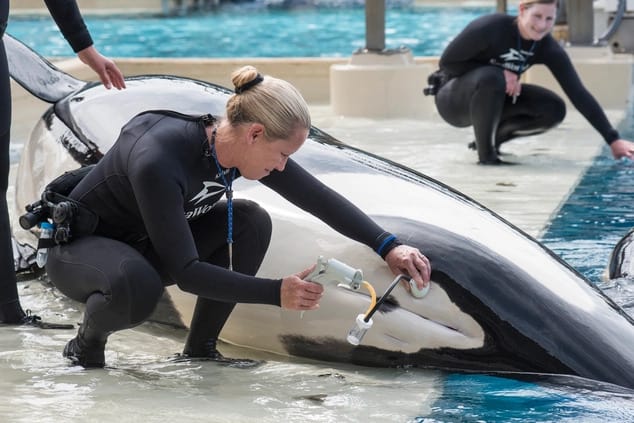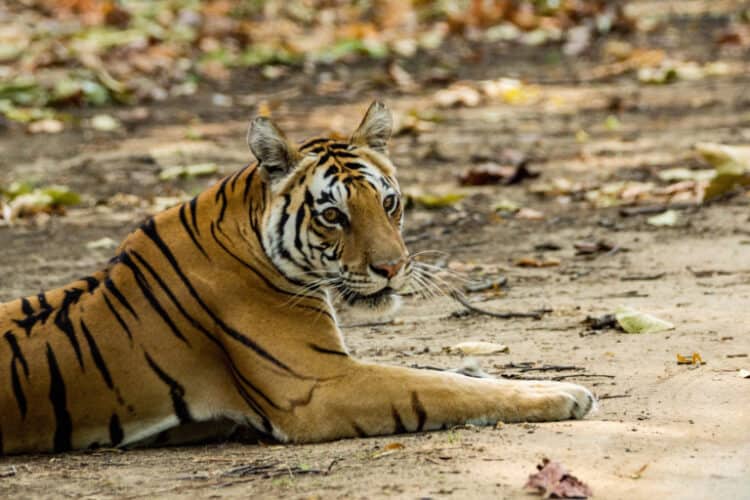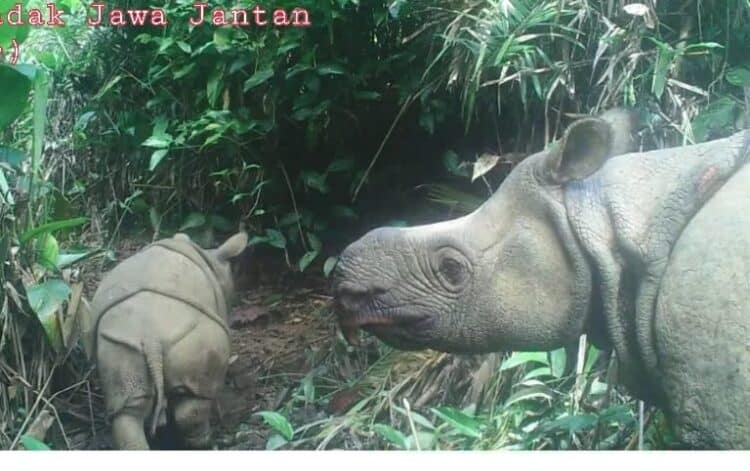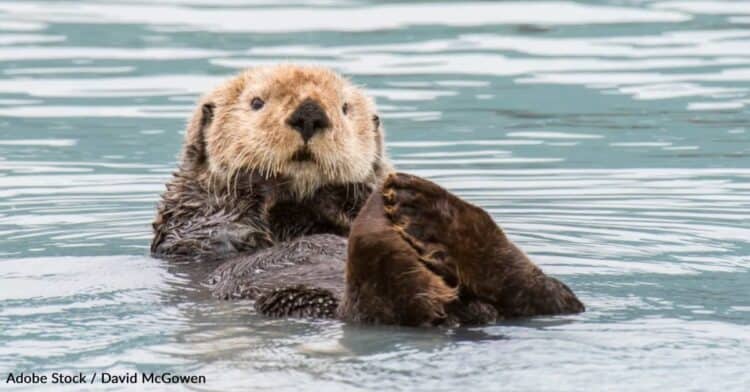Next month BirdLife International, a global partnership of 115 organizations working to protect birds and their habitats, will mark its 100th anniversary by holding the BirdLife World Congress in London. The event will bring together scientists, conservationists, and other stakeholders from around the world.
BirdLife has a lot to celebrate on its 100th birthday. It counts more than 2.5 million members across its partner organizations, which include the Royal Society for the Protection of Birds, the National Audubon Society, and the American Bird Conservancy, among others. It has also identified and documented more than 13,000 Important Bird and Biodiversity Areas (IBAs) – “places of global significance for the conservation of birds and other biodiversity” – and helped protect 2,000 high priority conservation sites around the globe.
BirdLife has further established itself as the go-to place for scientific information on the conservation status of birds, providing the International Union for Conservation of Nature (IUCN) with data for its Red List of Threatened Species, which underpins much conservation decision-making and policy.
BirdLife’s CEO Patricia Zurita told Mongabay that one of its key priorities is to support conservation efforts along major global bird migration routes called flyways. Last year BirdLife launched the East Asian-Australasian Flyway Partnership, a $3 billion effort with the Asian Development Bank to protect the flyway that spans 20 countries from Australia and New Zealand to Russia to Alaska.
BirdLife sees these flyways as contributing toward the 30 by 30 framework that conservation groups and some governments are advancing as a mechanism to slow climate change and biodiversity loss.
Zurita says that to be effective, conservation must move beyond its colonial roots to become more inclusive and better meet the needs of local populations.
“Conservation has to benefit the people closest to it, both morally and practically: morally, because human beings deserve self-determination and the opportunity to flourish, and practically, because we have good evidence now that conservation solutions often don’t last if they work against the interests of local people,” she said.
Progress also requires a rethink of how we integrate nature into the economy, according to Zurita.
“Human prosperity and biodiversity conservation are still too often pitted against each other,” Zurita told Mongabay. “We have to integrate nature into our economies at local, national, and global scales. Since industrialization, we have pitted our economic systems against nature, as if we somehow existed outside of it.”
“I really believe that birds are messengers. Bird population declines are telling us that something is terribly wrong with how we manage our natural resources. But bird conservation successes have also shown us that when we listen to what birds are telling us, we can save them and improve human well being too.
“That’s the challenge, I think, to unite the ideas of biodiversity conservation and human advancement into a set of coherent policies and financial flows and break the old antagonistic cycles.”
Ahead of the Congress, Zurita spoke with Mongabay’s Founder Rhett A. Butler about the Birdlife’s work, how conservation is evolving, and her own experiences as an Ecuadorian economist who took the helm of BirdLife in 2015 as the first woman from a middle income tropical country to lead a major international conservation organization.
How did you become interested in wildlife and conservation?
Patricia Zurita: I had the great fortune of growing up in Ecuador, which is blessed with extraordinary natural resources, from Amazon rainforests to the Andes Mountains to the Pacific coastline and of course the globally unique Galapagos Islands. I had the opportunity to be outdoors often, exploring my country as a child, and a love of nature was instilled in me from a young age.
And then in college, I took a seminar on birds of the Andes, and my life was just completely changed. At 5:30 one morning, we watched bright red Andean Cock-of-the-rock males displaying for the females. They looked like flames flashing through the cloud forest. It was just magical. And of course, birds are not just our beautiful, amazing cousins on this earth; they are also pollinators, waste disposers, seed dispersers, pest control—and canaries in the coal mine that tell us about our own well being.
I changed my major and spent four years studying environmental science. My senior year, I was working in a field site on the border of Ecuador and Peru. A war broke out between the two countries over that section of the border, and we had to leave our work. Ultimately, part of the resolution of the conflict included the creation of a nature reserve on the border. That made an impression on me: nature as a solution to human troubles.
What was your path to become the first woman from a developing country to lead a major international conservation organization?
Patricia Zurita: After I finished my degree in environmental science in Ecuador, I worked with the Ecuadorian government monitoring the environmental practices of oil companies in national parks and reserves in the Amazon. Ecuador’s economy depends heavily on oil production, and being in this amazingly biodiverse environment, acknowledging that most of the decision making is driven by economics, I decided to pursue a master’s degree in natural resource economics at Duke University. I had begun to realize that in order to preserve biodiversity and advance human wellbeing, we would need to build an economic system that values nature adequately and in different ways than humanity has done over the last two centuries.
After my master’s degree I had the fortune of working with the World Resources Institute in a very different field: agriculture, water quality and the opportunity of using economic tools to make them work together. After that, I spent seven years at Conservation International, first in the Andes region and then globally. From there, I became executive director of the Critical Ecosystem Partnership Fund (CEPF), which was a position that let me direct investments in conservation worldwide, supporting and enabling civil society organizations to do conservation. My experience with CEPF showed me firsthand the incredibly important role local civil society plays in securing sustainable solutions for nature.
From there, I became CEO of BirdLife International in 2015. I am deeply motivated by the power of BirdLife’s global network of more than 115 national partner organizations, our globally renowned science (BirdLife maintains bird data for the IUCN Red List and the global Important Bird Areas database, which has grown into the Key Biodiversity Areas partnership), and our history of conservation successes.
You’ve been working in conservation for more than 20 years now. What are the biggest differences in conservation between when you got your start and now?
Patricia Zurita: I think the role of women in conservation as leaders of the movement has started to change.
I believe the needs are as big as 20 years ago with the disadvantage of having less time to turn things around. That said, it does feel like there is more awareness and definitely a lot more involvement and push from the younger generations.
Perhaps because I work with BirdLife, I feel there is more recognition of the role of local civil society and a greater respect to the legitimacy and wisdom that local groups, local communities and Indigenous people have to tackle the dual crises of nature loss and climate change.
Lastly, I believe we have made progress, although a lot more is needed, helping people understand that the climate and nature loss crises are the two sides of the same coin. Twenty years ago that was not even spoken about.
You’ve been involved with developing and implementing conservation agreements with Indigenous peoples and local communities. What were the top things you learned from this experience and how are you applying that to your role at BirdLife?
Patricia Zurita: NGOs and governments have to recognize the deep expertise, wisdom, pride and commitment that Indigenous peoples and local communities bring to their relationship with nature, land and water, often shaped by millennia of experience. Historically and still today, central governments and NGOs have minimized (or even outlawed) the knowledge, expertise, and priorities of Indigenous peoples in particular. And, as you’ve reported recently here, Indigenous leaders are often murdered for their environmental leadership around the world, which is a tragedy that must end.
Conservation has to benefit the people closest to it, both morally and practically: morally, because human beings deserve self-determination and the opportunity to flourish, and practically, because we have good evidence now that conservation solutions often don’t last if they work against the interests of local people.
One promising example is BirdLife’s work with its Southern Atlantic Forest partners Guyra Paraguay and Aves Argentina to reconcile forest restoration with local economic interests. A big part of the solution is shade-grown yerba mate, which is used to make a popular caffeinated drink. This agroforestry initiative is simple but sophisticated and generates a premium for local producers for their forest-friendly products.
Guyra Paraguay is scaling up this model by developing partnerships with other organizations that want to achieve similar things for similar reasons. So for example, Guyra Paraguay is working with Aves Argentinas to create an “eco-productive” corridor linking Atlantic Forest fragments and Key Biodiversity Areas between southeastern Paraguay and northeastern Argentina. Through the corridor, farms are adopting forest-friendly yerba mate production.
They’re already starting to show measurable conservation outcomes, and the collaboration between BirdLife partners and local allies are growing. These are the kinds of approaches we need more of to meet the challenges of this century.
What do you see as the conservation sector’s biggest blind spots? Or in other words, where does conservation need to do better?
Patricia Zurita: Well, we have already talked a bit about decolonizing conservation, which still has a long way to go.
It’s also critically important to set measurable targets for conservation outcomes, and then track our progress against those targets as we go. From the level of individual NGOs all the way up to the level of global cooperation, we too often focus on ideas or the amount of effort we are putting in. We have to get real: We have to set good goals, measure our results, and adapt quickly if our results don’t meet our commitments. Accountability should be the norm, not the exception. This was one of my requests when I addressed the U.N. Biodiversity Conference last fall.
I would also say that we in conservation have to work with governments, philanthropy, and the private sector to close what we call the biodiversity finance gap. We cannot be naive about the scale of investment it will take to turn around the biodiversity crisis. We have to aim government and private sector investments at the root causes of the crisis and, at the same time, end government subsidies that are making the problems worse. Global efforts to build back economies and communities from Covid-19’s terrible effects, ongoing international development investments, and climate change mitigation and adaptation funds can all be directed to embrace nature as part of the solution to human prosperity. Some of these approaches are called nature-based solutions and green infrastructure. And of course, the philanthropic community has a vital role to play in catalyzing these governmental and private sector shifts.
What are BirdLife International’s top priorities in the near term (2-3 years)? How about by 2030?
Patricia Zurita: BirdLife is celebrating our centennial in 2022. We like to say 100 years of BirdLife, 10 years to act, one year to inspire.
In the short term, one of our big priorities is our Regional Flyways Initiative. Last fall at the U.N. Biodiversity Conference, BirdLife launched a $3 billion undertaking with the Asian Development Bank and the East Asian-Australasian Flyway Partnership. This flyway is one of eight major global bird migration routes. It spans more than 20 countries, and 200 million people live in and near its chain of wetlands. Some of the world’s most endangered birds, like the Spoon-billed Sandpiper, depend on these wetlands, too. So to start, the initiative aims to protect 50 priority coastal wetlands along the flyway using investments from multiple private foundations, government bodies, and regional development banks to ensure that nature is integrated into the financial structures of the region. We are actively involving local communities throughout the work.
To give your readers one example of what this will look like, we ran a pilot project in the Yancheng Wetlands of China called the Jiangsu Yancheng Wetlands Protection Project. More than half of the region’s wetlands had been destroyed or damaged by human activities, but with financing from the Asian Development Bank and the Global Environment Facility, we supported the protection and management of two nature reserves and two forest farms. This gave sustainable jobs to more than 2,900 people in the area and helped restore 45 square kilometers of wetlands. Waterbird populations jumped by 365% in the Rare Bird Nature Reserve core zone. The Yancheng Wetlands were listed as a UNESCO World Heritage natural site as well.
I mentioned there are eight major global flyways. We want to scale this approach to the other flyways as quickly and sustainably as possible in the next few years.
Science is clear that we have a short window in which to act. BirdLife international supports the 30 by 30 framework as one positive step. By 2030, we need not only robust global agreements on biodiversity and climate targets, but we need to have taken substantial action toward reaching those goals. To be honest, national governments and the international community has been better at talk than action so far. That’s not to say there’s been no progress, but globally all the key indicators are still headed in the wrong direction.
We are at a tipping point. We know the costs of inaction, and we know how to make a difference. We must find the will to act.
What is the biggest challenge with advancing bird conservation at this moment in time?
Patricia Zurita: Human prosperity and biodiversity conservation are still too often pitted against each other. I really believe that birds are messengers. Bird population declines are telling us that something is terribly wrong with how we manage our natural resources. But bird conservation successes have also shown us that when we listen to what birds are telling us, we can save them and improve human wellbeing too.
That’s the challenge, I think, to unite the ideas of biodiversity conservation and human advancement into a set of coherent policies and financial flows and break the old antagonistic cycles.
What do you see as the key levers for driving the kind of systemic change required to transform our relationship with the natural world?
Patricia Zurita: We have to integrate nature into our economies at local, national, and global scales. Since industrialization, we have pitted our economic systems against nature, as if we somehow existed outside of it.
This has both positive and challenging implications. On one hand, we have to end the toxic economic subsidies that prop up exploitation of species and ecosystems and unsustainable use of natural resources. I’m talking about destroying forests, unsustainable agriculture, overfishing, poaching and the wildlife trade, and so on. We must make faster progress in ending these outdated and damaging practices while transitioning economies to sustainable, beneficial partnerships with nature. For example, in North and South America, BirdLife partners are working with ranchers to boost their economic prospects and create more habitat for grassland birds.
And that’s the positive side: shifting economies to boost biodiversity and human wellbeing simultaneously. Putting carbon mitigation dollars into sustainable industries in developing nations to halt tropical forest loss; directing climate adaptation dollars into green infrastructure that absorbs floodwaters and cools cities; rebuilding local economies around ecotourism instead of wildlife exploitation; rewriting agricultural and energy policy to empower local people and boost habitat and species goals.
We are seeing these shifts at a site-by-site level today; we need to get serious about them at scale at subnational, national and international levels. That means the following:
Governments putting their money and their regulatory authority where their mouths are (bucking entrenched interests and making smart investments where needed);
The private sector making ESG commitments evaluated by outcomes, not just process, and using their powers of innovation;
Civil society organizations overcoming their competitiveness to apply consistent pressure and inspire progress by proving out great ideas;
And local communities and individual activists showing the way forward with brilliance and perseverance.
What advice would you give to a young person considering a career in conservation?
Patricia Zurita: First, we need your brilliance and we need your energy. Young people bring courage, clarity, and resilience, and we need all of those things. Don’t ever let anyone make you feel like you aren’t important. The future is yours. This is what I tell my own daughters.
Second, find excellent mentors. Find people who believe in your potential and have wisdom and experience that can help you succeed. I wouldn’t be where I am today without mentors such as Thomas Lovejoy, whom we sadly just lost. He is in many ways the father of the word “biodiversity,” and for 50 years made a huge difference for the planet and in the lives of young conservationists like me.
What would you say to young people who are distressed about the current trajectory of the planet?
Patricia Zurita: Life is deeply resilient. Life finds a way. I’m talking about individual people, I’m talking about human societies, I’m talking about species, and I’m talking about ecosystems. We should be concerned when we look at the state of the world, but we should also be hopeful when we look at how North America’s Bald Eagle or the Mauritius Kestrel have recovered, or when we look at how technological, social, and economic innovations can change our world for the better.
If you despair, you give the future over to others. But if you find hope and take charge, you can chart a new path.
This article by Rhett A. Butler was first published by Mongabay.com on 10 August 2022.
What you can do
Support ‘Fighting for Wildlife’ by donating as little as $1 – It only takes a minute. Thank you.
Fighting for Wildlife supports approved wildlife conservation organizations, which spend at least 80 percent of the money they raise on actual fieldwork, rather than administration and fundraising. When making a donation you can designate for which type of initiative it should be used – wildlife, oceans, forests or climate.







Leave a Reply